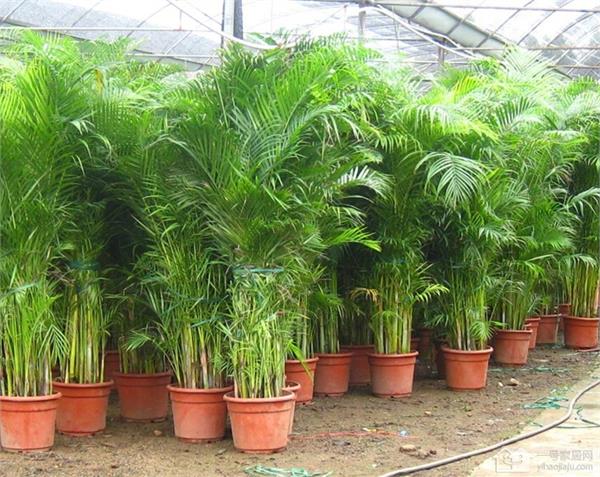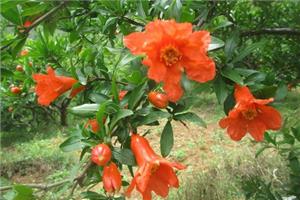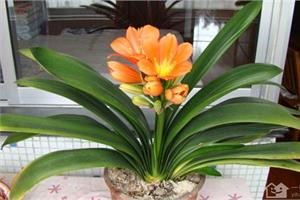What kind of plants can purify indoor air?
Recently, the air quality is getting worse and worse, so now many owners are used to putting some green plants to purify the air after house decoration, removing formaldehyde and other harmful substances, and putting a few small pots of indoor air at home can not only evolve the air, but also beautify the environment, so what kind of plants can purify indoor air? Let's take a look.

Plants that purify the air indoors
1. Loose-tailed sunflower is known as "the most effective air humidifier". Betel nuts keep your room or office moist during dry periods, continuously removing harmful chemicals from the air. In winter, it can even replace the humidifier.
2. Brown bamboo is a kind of omnipotent plant, which can survive in dry and humid climate. it is suitable for temperatures ranging from 20 to 100 degrees Fahrenheit and is resistant to most plants and insects. For more pictures of plants that can purify the air, please search for 3. Hawaiian coconut (palmaceae) the Hawaiian coconut (palmaceae) scored slightly lower than the first two plants, and it is also one of the good "purification plants". Hawaiian coconuts can thrive in a small amount of sunshine and moist but not humid environment. If these conditions are guaranteed, Hawaiian coconuts can help keep your indoor air fresh.
3. Indian rubber tree, rubber tree is good at removing indoor chemical toxins, especially formaldehyde. Unlike other plants, it does not need a lot of sunlight, but its purification effect is stronger than all other banyans. However, it is important to note that the leaves of the rubber tree are poisonous, so be careful if your pet moves around the rubber tree.
4. Dragon Blood Tree ranked fifth with 7.8 points. As long as you buy the dragon blood tree back, it can make the air in your room or office fresh and pleasant.
5. Dryopteris: it can absorb about 20 micrograms of formaldehyde per hour, so it is considered to be the most effective biological purifier. People who deal with paint or paint all day long, or people who like to smoke around them, should put at least one fern in the workplace. In addition, it can also inhibit the release of xylene and toluene from computer monitors and printers.
6. Silver Queen: it is famous for its unique air purification ability: the higher the concentration of pollutants in the air, the more it can exert its purification ability! Therefore, it is very suitable for dark rooms with poor ventilation.
7. Duck foot wood: bring fresh air to smoking families. Leaves can absorb nicotine and other harmful substances from the smoky air and convert them into harmless plant-owned substances through photosynthesis. In addition, it can reduce formaldehyde concentration by about 9 milligrams per hour.
8. White palm: an expert in inhibiting the exhaust gases exhaled by the human body, such as ammonia and acetone. It can also filter benzene, trichloroethylene and formaldehyde in the air. Its high evaporation rate can prevent dryness of nasal mucosa and greatly reduce the possibility of disease.
9. Pueraria lobata: Pueraria lobata can work in an environment that other indoor plants cannot adapt to. Through a process similar to photosynthesis, it can break down toxic substances released from fabrics, walls and smoke into plant-owned substances.
Ivy: can effectively resist the carcinogens in nicotine. Through the tiny pores in the leaves, harmful substances are absorbed and converted into harmless sugars and amino acids.
11. Fortune tree: release oxygen and absorb carbon dioxide; suitable for warm, humid and well-ventilated environment, Xiyang is also resistant to shade and convenient for management and maintenance.
12. Green pineapple: the high-efficiency air purifier in this creature is native to the Mexican plateau. Because it can purify benzene, trichloroethylene and formaldehyde in the air at the same time, it is very suitable to be placed in the newly decorated room. The new floor is only one of the sources of harmful substances.
Finally, I would like to remind you that some flowers and plants are beautiful and pleasing to the eye, but some may contain toxins and are harmful to human health, especially young children at home, so we should be more careful when choosing indoor plants.
The above is the relevant introduction of this article, I believe you have a simple understanding of this after reading it, if necessary, you can continue to pay attention to the No. 1 home network for more information.
Related
- Wuhan Hospital Iron Tree Blooming Result Was Instantly Frightened by the Gardener Master
- Which variety of camellia is the most fragrant and best? Which one do you like best?
- What is the small blue coat, the breeding methods and matters needing attention of the succulent plant
- Dormancy time and maintenance management of succulent plants during dormancy
- Minas succulent how to raise, Minas succulent plant pictures
- What are the varieties of winter succulent plants
- How to raise succulent plants in twelve rolls? let's take a look at some experience of breeding twelve rolls.
- Attention should be paid to water control for succulent plants during dormant period (winter and summer)
- Watering experience of twelve rolls of succulent plants
- Techniques for fertilizing succulent plants. An article will let you know how to fertilize succulent plants.



